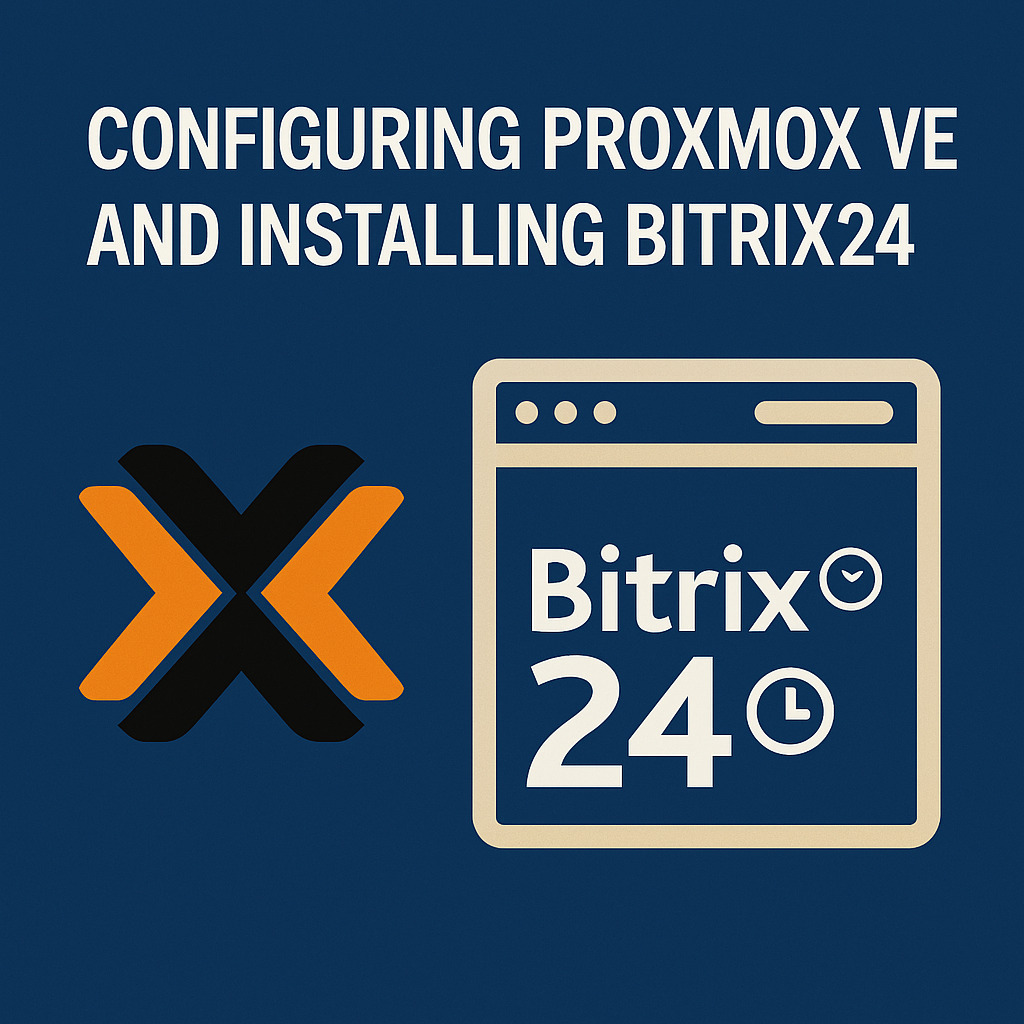Installing Bitrix24 on Proxmox VE on Hetzner Server from Scratch
Andy Wits Blog


Here are the steps to configure the manager of virtual machines Proxmox VE and install inside VM and CT Bitrix24, a box version.
apt install open-iscsi chrony
apt remove linux-image-amd64 'linux-image-6.1*'
os-prober:
apt remove os-prober
/etc/ssh/sshd_config), change the SSH port, and disable unneeded features:
AllowAgentForwarding no
AllowTcpForwarding no
X11Forwarding no
fail2ban for sshd and Proxmox (instructions).bitrix.example.com) and request a dedicated MAC address from Hetzner.auto enp4s0
iface enp4s0 inet manual
auto vmbr0
iface vmbr0 inet static
address A.B.C.D/26
gateway A.B.C.E
bridge-ports enp4s0
bridge-stp off
bridge-fd 0
up route add -net A.B.C.F netmask 255.255.255.192 gw A.B.C.E dev vmbr0
wget https://repo.bitrix.info/vm/VMBitrix9.0-0-CentOSStream9-VMWare.zip
qm importdisk 100 VMBitrix9.0-0-CentOSStream9-VMWare-disk1.vmdk local -format qcow2
cd /home/bitrix/www/
wget https://www.1c-bitrix.ru/download/files/scripts/restore.php
chown bitrix: restore.php
swapoff -a
parted /dev/sda
xfs_growfs /
mkswap /dev/sda2
blkid -s UUID -o value /dev/sda2
mcedit /etc/fstab
swapon -a
resume=UUID=... parameter:
grubby --info=ALL
grubby --remove-args="resume=UUID=..." --args="resume=UUID=..." --update-kernel /boot/vmlinuz-...
pveam to find available templates:
pveam update
pveam available | grep -i centos
pveam download local centos-9-stream-default_20221109_amd64.tar.xz
pct:
pct unmount 101
dnf install openssh-server
/etc/ssh/sshd_config and restart SSH:
systemctl status sshd
dnf install nano mc wget screen
./bitrix-env-9.sh
su bitrix -l
cd /home/bitrix/www/
wget https://www.1c-bitrix.ru/download/files/scripts/restore.php
mc . sh://[email protected]/home/bitrix/www/bitrix/backup
timedatectl set-timezone Asia/Tokyo
/home/bitrix/.msmtprc.